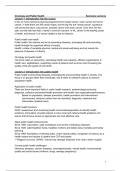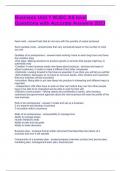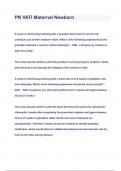Zusammenfassung
Oncology and public health summary (minor biomedical topics in healthcare)
- Kurs
- Hochschule
This is a summary of all lectures of oncology and public heallth (in English). It summarizes all important information, with some pictures for clarification. Dit is een samenvatting van alle hoorcolleges van oncology and public health (in het Engels). Alle hoorcolleges die zijn gegeven worden hi...
[ Mehr anzeigen ]












